Collaboration, Advocacy, and Understanding: Lessons from NDC’s Interpreting Panel
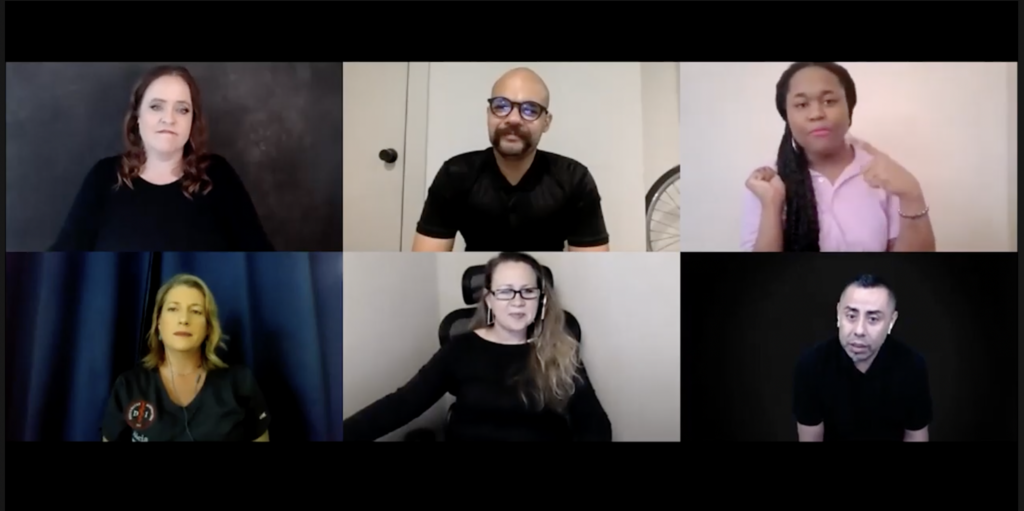
Interpreting services cannot be provided in a vacuum. Sign language interpreters have a range of knowledge, skills, and backgrounds. Those varied qualifications must be matched appropriately to the job at hand and the deaf person must be included in every step of the process.
Those were the key lessons from Improve Access Through Interpreting, a live online discussion hosted by the National Deaf Center on Postsecondary Outcomes (NDC) on April 29. Attendees had the opportunity to interact with a diverse group of experts, who shared their experience and knowledge.
New Live Panel: Learn from Student Experiences on June 3

Join us on June 3 at 2 p.m. CT for Persevering Through Uncertainty: Stories from Deaf Students, a live online discussion featuring a diverse panel of deaf students attending a variety of universities, technical schools and colleges.
Find Recordings, Information, and More on New Events Page
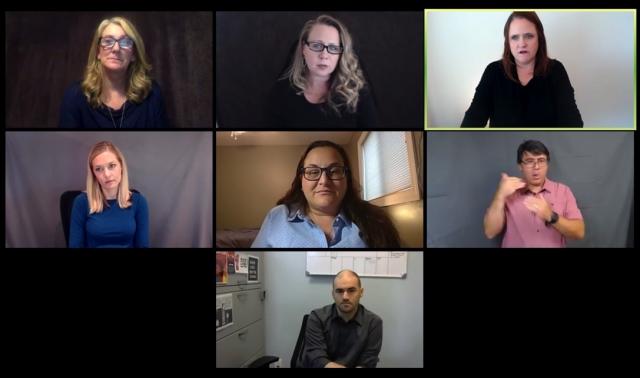
Did you miss a live event and want to get caught up? We’ve got you covered. Visit the retooled Events and Presentations page from the National Deaf Center on Postsecondary Outcomes (NDC).
AHEAD 2021 Spring Colloquium
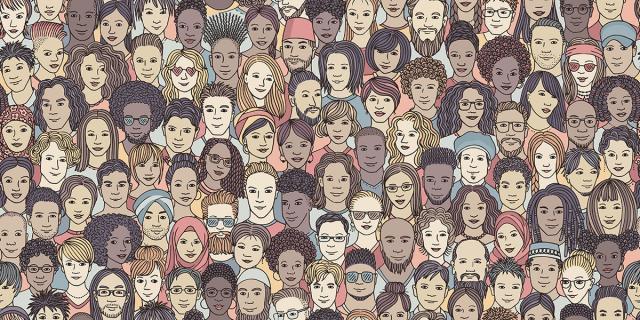
As the virtual landscape from the pandemic continues, inquiries on the AHEAD listserv indicate there are many colleagues in need of guidance with coordinating interpreting and speech-to-text services (CART, C-Print, TypeWell) for online classes. Integrating service providers in virtual settings requires proactive planning to ensure effective communication with deaf students. Join the National Deaf Center to learn current practices and tips when coordinating service providers for online meetings, campus events, and more. Presenters will share resources to commonly asked questions from AHEAD members with the goal of providing an equitable college experience for deaf students in a virtual world.
How to Center Deaf People in Systems Change, According to Local Community Experts

It’s been said that the most meaningful change happens at the local level. But how can local communities involve more deaf people in decision making and let them lead the way in creating positive systemic change?
That was the topic of For Deaf People, By Deaf People: Centering Deaf People in Systems Change, a panel discussion hosted online by the National Deaf Center on Postsecondary Outcomes (NDC) and its Engage for Change | local (EFC) initiative, which work toward improving educational and employment outcomes for deaf people by facilitating community- and deaf-led dialogs across the nation.
State Leaders Share Ways to Increase Access to Services for Deaf Youth
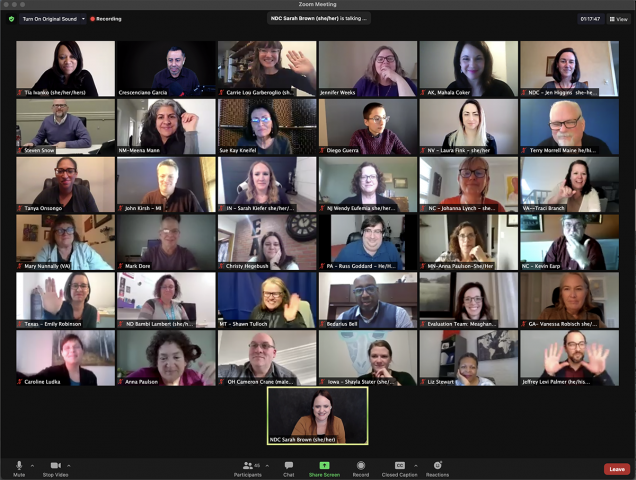
The transition from high school to further education, training, or career is a pivotal time for young people. Marginalized groups – including deaf students – are especially vulnerable during this time, and access to services is critical to ensuring success.
State leaders in deaf education, vocational rehabilitation, and other areas vital for #DeafSuccess met online on Jan. 12 as part of the National Deaf Center on Postsecondary Outcomes’ Engage for Change | state initiative.
Live Panel December 8: The Power of Community: Centering Deaf People in Decision Making
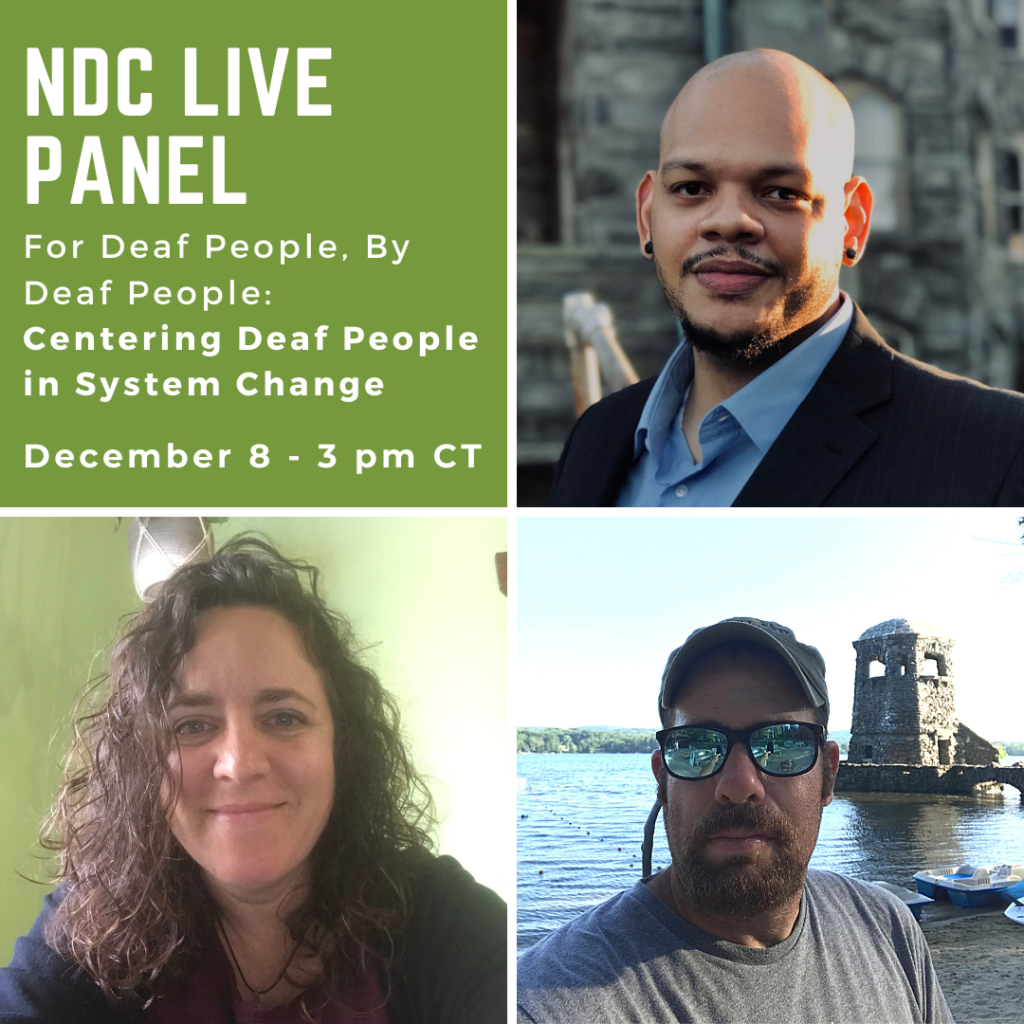
The lived experience and knowledge of deaf community members must guide policy changes, strategic planning, and programs that are designed to reduce barriers and increase opportunities for deaf people in the United States. In reality, however, this is seldom the case. Decisions are made for, and behalf of, deaf people without involving them every day. This upcoming live event panel on Dec 8 is an opportunity for panelists to gain an understanding of the importance of including deaf people in decision making and key elements of deaf-led community projects.
Engaging for Change: State Leaders Meet Regionally to Address Pandemic Crisis for Deaf Youth
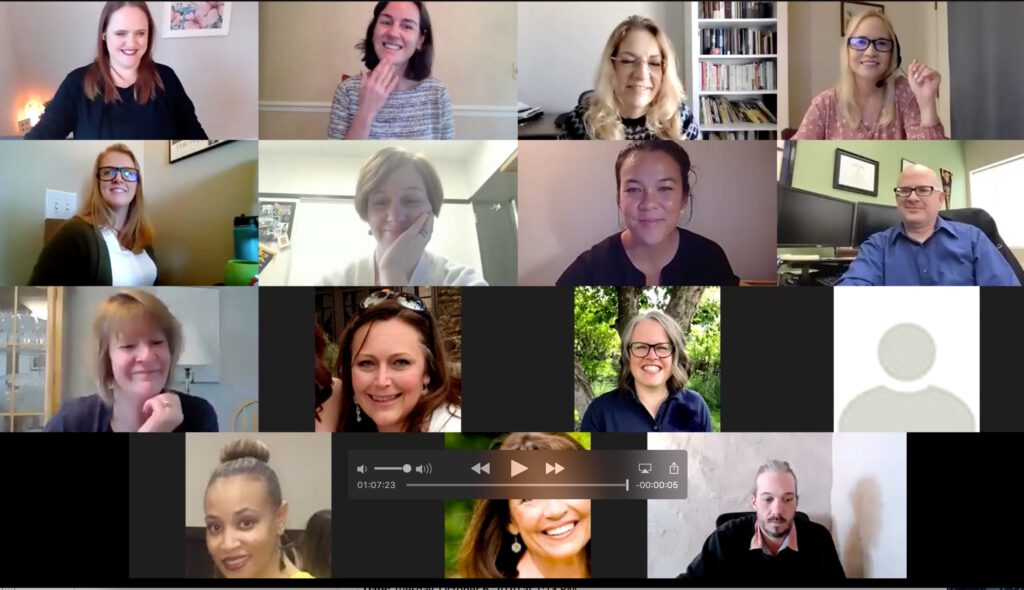
Leaders in education and vocational rehabilitation (VR) met throughout the summer and fall in Engage for Change | state (EFC) online regional meetings organized by NDC — determined to advance their short-term pandemic response and proactively create long-term strategies to improve services, support, and outreach to deaf youth.
Get Answers About Online Accommodations with NDC Live on Sept. 15

Why can’t I use auto-captions? What does “effective communication” mean? How do I pin the interpreter?
Get answers to these frequently asked questions and more with NDC Live: Remote Services, a free, online event featuring members of the National Deaf Center on Postsecondary Outcomes’ (NDC) help team, Stephanie Zito, MS, NIC and Lore Kinast, MA. Their presentation, based off their presentation at the AHEAD 2020 Conference, will focus on remote service providers such as interpreters and speech-to-text professionals.
Raising the Bar for Postsecondary Success: Cawthon Presents Keynote on Transition as Design for Life

In a keynote address to the Collaborative Experience Conference, director of the National Deaf Center on Postsecondary Outcomes, Stephanie W. Cawthon, PhD, calls on parents and educators of deaf, deafblind, and hard of hearing children to rethink the strategies they use to empower young adults who are making the difficult transition to life after high school — to go beyond a checklist that helps teens investigate a training program or apply to college, and instead provide a design for life that prepares them to evolve as people, seize opportunities, and respond to ever-changing environments. [Disponible en español]
Seven Presentations at AERA 2020 Highlight NDC’s Innovative Research Findings

Researchers from the National Deaf Center on Postsecondary Outcomes (NDC) were originally scheduled to make seven presentations—the most ever at a conference by NDC staff—at the American Educational Research Association (AERA) 2020 Annual Meeting on April 17-21, the world’s largest gathering of education researchers and a showcase for innovative studies. Because the conference was cancelled due to the COVID-19 pandemic, the papers and presentations will be uploaded to the AERA Online Repository to expand their impact, discoverability, and authentication.
Catch Us if You Can!

NDC is on the road presenting at not one, but TWO different conferences this week. We are in Washington, D.C., Monday through Wednesday at the Association of University Centers on Disabilities (AUCD) conference, and starting Wednesday, we will be at the OCALICON conference in Columbus, Ohio.





